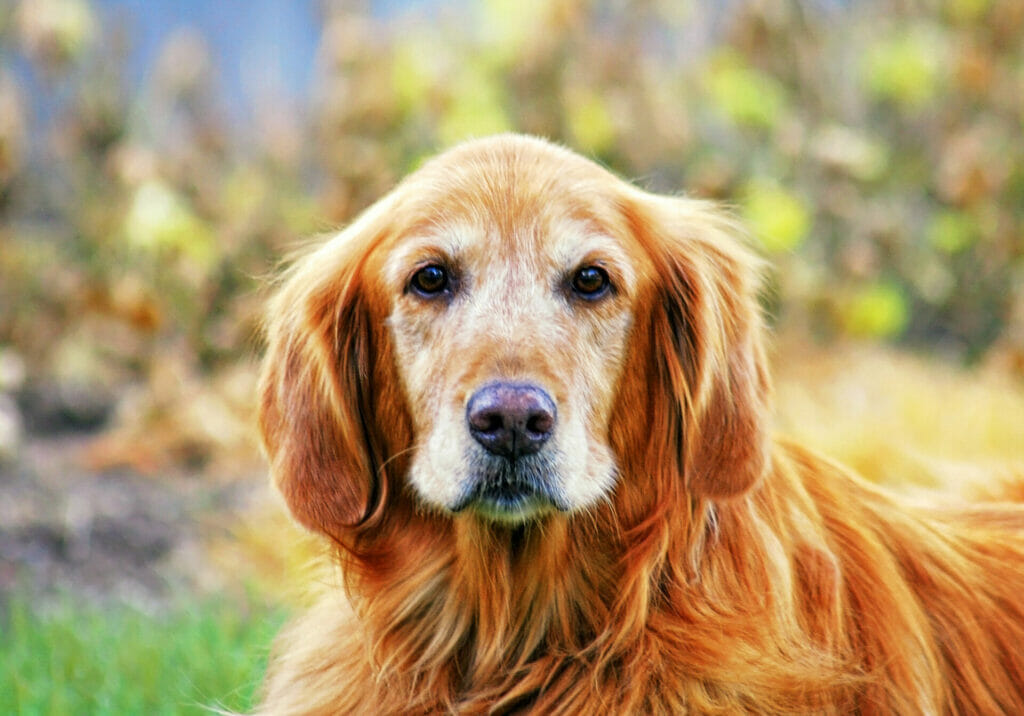Have you noticed that your dog has gray hairs on his muzzle or a stiff walk? Depending on the breed, most pups hit their senior years between 7 and about 10 years of age. That is why we have created the ultimate senior dog checklist here at What The Pup! When they enter this stage of life, their needs can change. Here are some adjustments you should consider for your senior dog!
Diet
Dogs have different nutritional needs throughout their life. Young and active puppies typically need more protein and calories. Your aging dog needs fewer calories as they tend to become less energetic naturally. Older dogs may also benefit from foods that are easier to chew and digest. For example, try softer food or, if you’re able to, human-grade food like Spot & Tango’s UnKibble or Fresh recipes.

Supplements
All of these supplements can be given to your dog before they hit their senior years; preventative action is often better than waiting until your pup needs them. Consult your veterinarian to see which supplements your dog can benefit from starting today.
Fish Oil
Fish oil supports your dog’s heart, immune system, and joint health and can reduce itchy skin by providing omega-3 fatty acids. It’s a suitable type of fat that your dog is unable to produce on their own. There are three types of fish oil to choose from, natural triglyceride oil, ethyl ester oil, and synthetic triglyceride oil; The American Kennel Club recommends TerraMax Fish Oil or the Nordic Naturals Omega-3 Oil.
Antioxidants
Antioxidants are essential to your dog’s daily intake, especially when they are reaching their senior years, as they attack any free radicals from the body. Radicals such as smoke, pollution, etc. Without antioxidants, your dog is more likely to incur health issues from simple allergies to cancer or respiratory diseases. According to Dr. Dan Richardson with Vetericyn Animal Wellness, “Look for ingredients like lactoferrin, resveratrol, superoxide dismutase, and cysteine, as well as other essential vitamins like A, C, and E, to ensure your pup has the full range of antioxidants.”
Joint Supplements (Glucosamine)
It is always possible to begin providing your dog with a daily joint supplement. As your dog ages, the cartilage in their joints can weaken or become inflamed (components of arthritis). Joint supplements are clinically proven to provide protection and support to aging cartilage.
CBD Oil
CBD for senior dogs is most commonly used to ease pain and inflammation due to arthritis or even lymphoma cancer symptoms. However, overall, CBD interacts with receptors in the brain and central nervous system which regulate mood, sleep, pain, memory, appetite, inflammation, nausea, and stress levels. We recommend Blooming Culture CBD oil, a trusted plant-derived company in the USA.
Probiotics
As your dog ages, digestion issues are almost guaranteed. Just like humans, dogs have bacteria in their stomachs that aid digestion and absorption of nutrients and vitamins. However, with age the number of good bacteria vs. harmful bacteria tends to waver. Probiotics will balance out this discrepancy and help maintain healthy digestion and bowel movements. Veterinarians.org have scored PetLab Co. Probiotics as the best overall for senior dogs, see their site for more favored probiotics tailored to your dog’s lifestyle.
Bedding
You’ve probably always known your dog to sleep absolutely wherever they want, from the cozy couch to the concrete outside. But as your dog ages, hard floors can become difficult for your dog to manage. We recommend an orthopedic dog bed, especially if you see signs of arthritis. A simple bed switch can alleviate joint pain and provides the extra comfort they need as they sleep. There are lots of orthopedic beds to choose from. Here are the 15 best beds for aging dogs by the Fluent Woof. My senior dog currently sleeps on the PetFusion Ultimate dog bed and prefers sleeping there over anywhere else in the house!
Partner in Crime
If you don’t already have two dogs, depending on your dog’s age, consider getting them a sidekick! As pack animals, they thrive around other dogs. And on top of providing them with a companion, another dog can boost energy and encourage more activity than if they were alone. Physically activity is essential for senior dogs and exercise and playtime may be an easier task with a slightly younger dog by their side!
Environment Adjustments
Improving their environment means changing things in and around your house to make things easier for your senior pup.
Ramp Boosts
If your dog is allowed on the furniture, jumping on and off may become a stressor on their mobility. To help them continue living their life of leisure, add a ramp that’s gentle on their joints and prevents further inflammation. For indoor use, there are many that can even look aesthetically pleasing in your home like this 3-layer slope from Topmart.
Lighting
Glaucoma and/or cataract are everyday struggles that most aging dogs will inherit. As these problems progress, their night vision may get worse. Add lights along stairways or long hallways to help your dog navigate the house more safely and confidently at night time. Additionally, I recommend these simple guide lights for outlets or plug-in night lights that automatically turn on when dark; both are inexpensive and can be incredibly beneficial.
Carpet/Rugs
As arthritis and hip issues sneak in, your dog may need more assistance maintaining traction. By adding carpeting or rugs in the high-traffic areas where your dog frequently is, you can ensure your dog will have better mobility throughout the home.
Watching your beloved dog age and begin slowing down can be difficult. However, it is up to you to ensure that your pup is as happy and healthy as possible in their final years! As an additional tip, I encourage you to add a daily picture and/or video to your checklist and document as many fun and happy memories as possible!




















